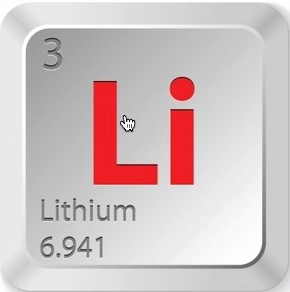 High index of suspicion is key for diagnosis of endocarditis - Look for clinical signs (ex, murmurs, Janeway lesions, etc) - Consider in the setting of multiple organ systems being involved Don't ignore lab abnormalities or vital sign instability Hyponatremia is known consequence of severe pulmonary disease - Can develop mild hyponatremia or more severe versions with SIADH 3% NS only indicated for hyponatremia with neurologic compromise Slow correction is necessary for patients with chronic hyponatremia
0 Comments
 1) Late-onset Sepsis occurs between 7 and 89 days in term babies. However, it usually happens by 4-6 weeks. 2) It is usually caused by Gram-positive organisms, but don't forget E.Coli and other GNRs 3) Appropriate perinatal preventive care for GBS does not effect the incidence 4) Have a low index of suspicion. Babies are often not catastrophically ill at presentation, but then decompensate quickly 5) Meningitis is much more common. Seriously consider LP if you are at all concerned Key(toacidosis) Points Severe DKA definition - Serum bicarb <5, pH <7.1 - Hyperglycemia - Dehydration - Ketosis- ketonemia/ketonuria - Metabolic acidosis Fluid resuscitation and insulin infusion - NS- Initial 10-20 mL/kg over 1-2 hrs - 3 bag system: - Bag 1- insulin (NO INITIAL BOLUS); Start at 0.1 U/kg/hr; Adjust based on q1h BG +/- Q1h BMP - Bag 2- NS + 20 KCl + 15 KPhos - Bag 3- D5 (or D10) + 1/2NS + 20 KCl + 15 Kphos Electrolyte abnormalities - Hypo or hyperkalemia - replace in fluids; Max rate 0.5 mEq/kg/hr - Hypo or pseudohyponatremia - replace with fluids and corrects with lowering BG and gap - don’t allow > 10-12 mEq/L change in 24 hrs- monitor closely - Corrected Na = measured Na + 0.016 (glucose-100) - Hypophosphatemia - Replace in fluids if < 2mEq/L, monitor Ca2+ - Calcium- membrane stabilizer- takes 15-30 min - Calcium Gluconate: - Dose: Calcium Gluconate 10% - 100 mg/kg slow, Max 5-10mL - Less potent, less irritating to veins - Calcium Chloride - Dose: Calcium Chloride 10% - 20-30 mg/kg, Max 5-10mL - 3 x more potent than Calcium Gluconate - Complication: severe thrombophlebitis - Potential Complications of Calcium administration - Bradycardia, hypotension and peripheral vasodilation - Generally these occur if administered too quickly CErebral EdemaRisk factors
- insulin within first hour - high fluid volume in first 4 hrs - severe acidosis - hypocapnea after adjusting for acidosis - high BUN - use of bicarb - attenuated rise of Na during treatment - younger age (<5yo) Treatment - IV mannitol 0.5 to 1 g/kg over 20 minutes to be repeated if there is no response in 30 minutes- even if high Osms - Fluid restriction by one third - Hypertonic saline 3%, 5 to 10 mL/kg over 30 minutes - Elevate the head of the bed - Hyperventilation to maintain a PCO2 < 22 mm Hg, although aggressive hyperventilation may be associated with poor outcome - After treatment of cerebral edema, a CT scan should be performed to rule out other causes of neurological deterioration such as thrombosis or hemorrhage See PEDEMMorsel on DKA associated Cerebral Edema Cocaine Chest Pain · Cocaine is the 2nd most commonly used illicit drug in the US, 2nd to marijuana · Incidence of cocaine associated MI is 0.6 – 7% · Cocaine users have a lifetime risk of non fatal MI that is 7x the risk of non-users · Pathophysiology of cardiotoxicity: - Sympathomimetic, alpha adrenergic agonist, and prothrombotic · 2008 AHA Guidelines: - All patients get ASA and BDZs (Class IC and IB recommendation) - STEMI: Unequivocally undergo cardiac catheterization - NSTEMI/ACS: Manage similar to non cocaine chest pain patients except avoid B blockers - Low-Moderate Risk: Observe in CPU for 9-12h. - Based on data from a prospective study in 2003, NEJM, Weber et al. - Always think of the patient’s cardiac risk factors independent of cocaine use to determine their risk. Eczema Herpeticum· History: described as painful and burning. · Patients at risk are those with underlying dermatoses, chronic immunosuppression · PE: Umbilicated pustules that progress to punched-out erosions · Usually have a recent HSV -1 exposure · Look for eye involvement: herpes keratitis · Treatment: oral acyclovir 400 mg PO tid · May need admission if having severe pain Pill Esophagitis· History:
- Retrosternal pain (60%), odynophagia (50%), and dysphagia (40%) · Common Causes: - Antibiotics: Doxycycline, Tetracycline and Clindamycin - Anti Inflammatory: ASA, NSAIDs - Bisphosphonates - Other Causes: Iron, Quinidine, KCl  1. Think about SSSS on rash patients: goal is to catch it at early stage. If you are considering it, send home with oral antibiotics and follow up. 2. Know distinguishing features of SSSS from other serious dermatologic emergencies (especially SJS/TEN) 3. Tx: penicillinase-resistant antistaphlococcal antibiotic +/- clindamycin. if sick/high risk —> MRSA coverage 4. Adults and SSSS = be worried!  - Chloral hydrate is an oral sedative that has a narrow therapeutic profile, used for insomnia, anxiety and in pediatric sedation. Most common side effects of toxicity are depressed mental status and coma, nausea and vomiting, and cardiac instability with dysrhythmias. - Cardiac tissue becomes hypersensitive to catecholamines in chloral hydrate exposure, making epinephrine in ACLS and catecholaminergic pressors dangerous. Treat dysrhythmias with propranolol, 1-2mg IV over 5 minutes. - COPD ventilatory drive transitions to being triggered by hypoxia from hypercarbia. Hyperoxia can result in depressed respiratory rate, though this is not noted at lower FiO2. Use caution with administration of higher FiO2 oxygen in severe COPD patients. - Benzodiazepine overdose can be reversed with flumazenil, though caution should be used given risk of seizure precipitation. Goldfrank’s indications for use in OD are CNS depression, normal VS (including SaO2), normal ECG and otherwise normal neuro exam. - Spinal cord stimulators and other neurostimulators cause ECG artifact when electrical impulses are not parallel to ECG leads. Some may be turned off with magnets or remotes; avoid turning off stimulators if placed for dystonia. - Spontaneous retropharyngeal hematoma is a rare entity, though potentially life threatening. Classic triad (Capp’s Triad) is tracheoesophageal compression (dysphagia, odynophagia, hoarseness), anterior tracheal displacement, and anterior neck bruising. 
- Even number of holes could still mean 2 bullets in body |
Archives
August 2018
Categories
All
|


 RSS Feed
RSS Feed
